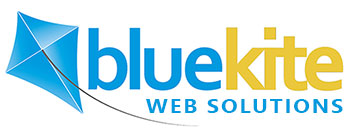Blue Kite Blog
Google Gets Serious About Mobile Websites
Is your website mobile friendly? Google is now taking a closer look and treating mobile-friendly websites differently than non-mobile-friendly websites, giving them a “mobile-friendly” label.
Image Optimization for SEO
Did you know that people can find your website or blog from your images? That’s right. An often overlooked part of SEO is handling images correctly. By naming files carefully and writing good alt tags (“alt” is short for “alternative text;” more on this below) you can get some extra traffic from Google Image Search…
How’s Your Bounce Rate?
A bounce rate is the percentage of visitors who leave your website right away, after seeing only one page. There will always be some visitors who arrive at your website by mistake; it’s only natural that they don’t stick around. And some visitors might hit your site quickly just to grab a phone number; that’s…
Do You Own Your Website?
One of my current challenges is that I can’t access a new client’s analytics data because it was installed in their former designer’s Google account, not theirs. This leads to the larger topic of who owns what when a website is built. It’s critically important to make sure that you own these things:
WordPress: Right For Your Business?
As of right now, about 22% of all websites are built with WordPress. At Blue Kite we’re using WordPress almost exclusively these days. We feel that it’s the best deal for our clients because it has an incredible number of features built right in. In the “olden days,” we would have had to charge a…
We Are Strictly “White Hat”
“White Hat” is a term applied to SEO (Search Engine Optimization). It means that the optimization techniques follow the quality guidelines set forth by major search engines like Google, Bing and Yahoo. There is also “black hat SEO,” which involves going over to the dark side and practicing illicit techniques, i.e. trickery, in order to…
#1 Way to Delay a Web Project
In 15 years of working with businesses on their websites I’ve seen this scenario over and over again: A business owner in the midst of a web design or redesign project will spend a lot of time thinking about what the new website should look like. Quite a bit of time is also spent thinking…
No More Boring Fonts
Until recently, type on the web was “Arial.” Or “Times New Roman.” That’s because web designers had to stick to using fonts that viewers would likely have installed on their own computers. If you wanted to deviate from these fonts, you needed to embed text in images, which introduced a whole new set of problems…
- « Previous
- 1
- 2
- 3
- Next »
